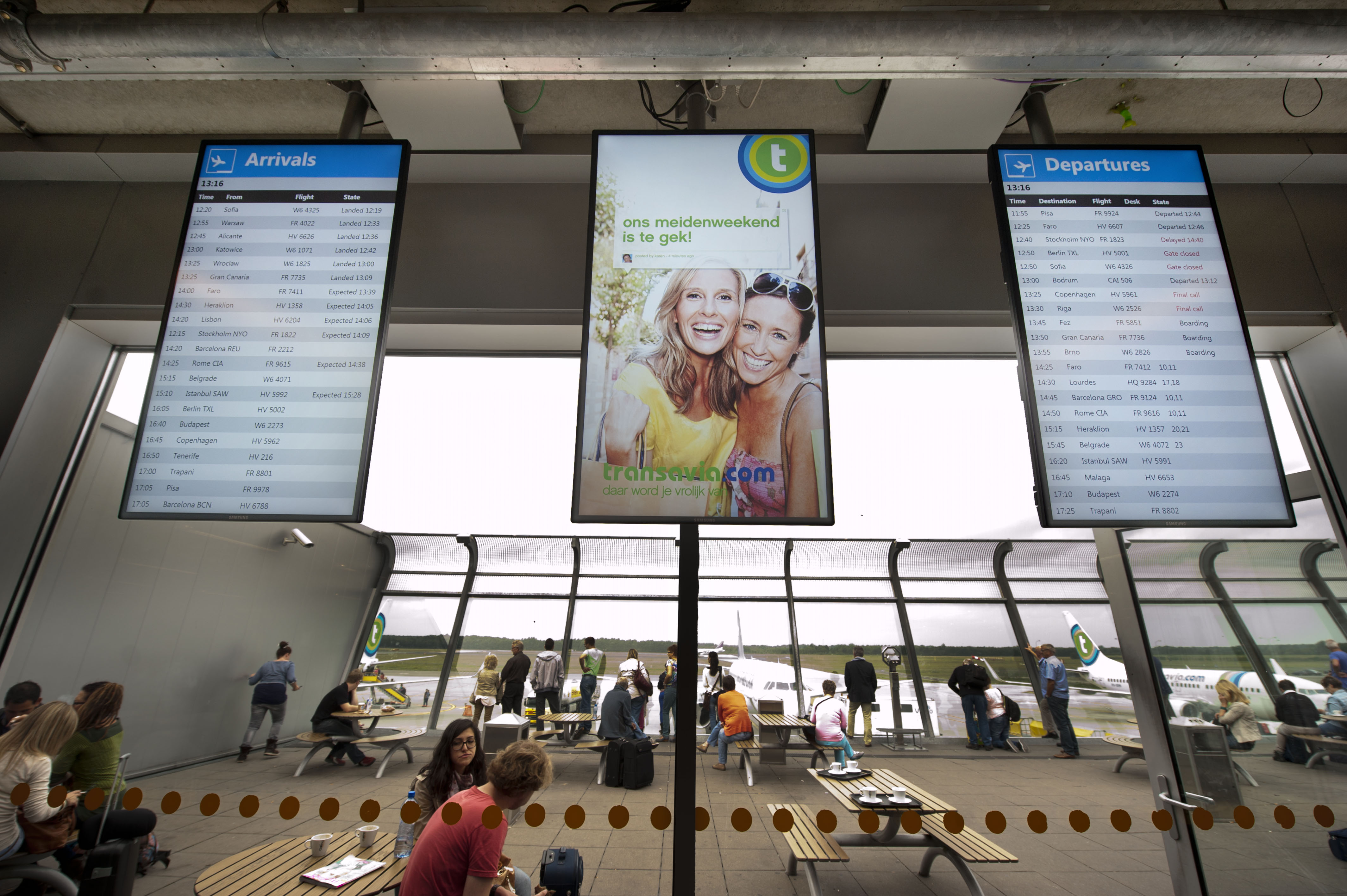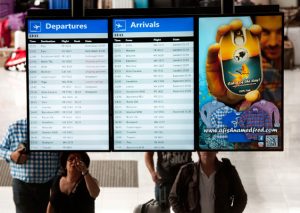A smart flight information display system offers targeted and personalized information for passengers, according to their location and travel needs.
Modern airports need to be in control. You have to be able to provide the perfect travel experience, without anxiety. That starts with strong passenger communication, as individually as possible. Today technology possibilities are nearly endless, and the role of displays in targeted communication increases. With the right software, you can send a personalized message, perfectly timed and within the appropriate part of the airport. An integrated approach makes that message become even smarter and more personal.
 Airport signage: One integrated approach
Airport signage: One integrated approach
The most important use of displays at an airport is to relay flight information. A lot of the time the displayed information is a simple list of departures or arrivals. Nothing more than a straightforward interpretation of the flight information display system (FIDS). Besides FIDS, airports use all kinds of separate standalone signage solutions to communicate with passengers. Why not support all displays and all signage applications from one powerful digital signage platform? This gives the opportunity to be flexible and to use each individual screen in the terminal building individually, optimally meeting the display requirements of the moment.
Airports can then use signage to steer the passenger flows, influence the decisions a passenger will make in specific situations and enhance their experience. With targeted advertising, airports can even generate additional revenues and more fully exploit the potential of their displays.
Why not support all displays and all signage applications from one powerful digital signage platform?
Departures & Commercial from PADS4 on Vimeo |
Welcome Screen from PADS4 on Vimeo |
|---|
Situations change in seconds
With intelligent digital signage software, a display can ‘recognize a situation’ by itself and dynamically respond to it with contextually relevant content that best suits the personal needs of the audience. For example, the displayed flight information of the departure screens can be expanded with directional arrows and information about walking distances and duration. This could dynamically adjust itself to the waiting times at the security check to ensure timely arrival.In the case of a gate change, the displayed wayfinding information can instantly show the updated directions. Passengers can also automatically be redirected if the normal route to the gate is blocked, or a certain area of the airport is particularly crowded. If there is a major delay, a suggestion of a visit to a coffee bar, together with arrows showing the right direction, could automatically pop up on the screen. This way, dull waiting moments can be turned into additional business for food and beverage outlets. In emergency situations, all screens can instantly switch to displaying emergency evacuation instructions, including arrows pointing to the nearest exit.
Future trends in flight information display systems
Nowadays, big data and sophisticated technologies enable airports to know everything about their passengers, their interests and needs, and how they move around the airport.
Airport Security from PADS4 on Vimeo |
Gate Screen Delayed Flight from PADS4 on Vimeo |
|---|
New technologies like audience recognition, I-beacons and near-field communications make it possible to connect with passengers at a more personal and targeted level. To give an example, it’s already possible with Wi-Fi technology to determine the nationalities of people at a waiting area and to adjust the content on the screens. There is no doubt that in the next couple of years there will be more examples like this.All of this should contribute to a better journey for passengers, which starts when they arrive at the airport. PADS4 is a digital signage product that can do this today.
Interested in how PADS4 can help you with effective airport communication? Contact us!

 Airport signage: One integrated approach
Airport signage: One integrated approach